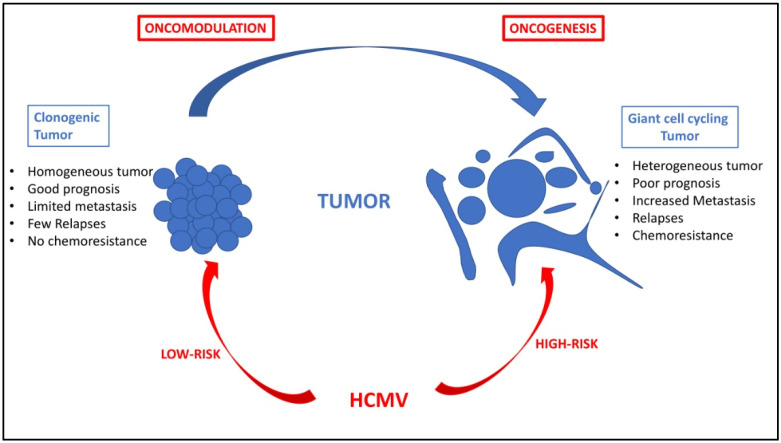Figure 2.
HCMV oncomodulation and oncogenesis: two paradigms for one tumor. Oncomodulation will result from the infection of tumor cells by HCMV strains (named low-risk strains), which will enhance the clonogenic development of the tumor and result in a tumor with quite controlled cell homogeneity, limited metastasis, few relapses, sensitivity to chemotherapy and radiotherapy, and an overall of good prognosis. In contrast, direct oncogenesis will result from the infection of primary cells by HCMV strains (named high-risk strains), which could participate in giant cell cycling with the appearance of polyploid giant cancer cells (PGCCs), in a tumor with highly heterogeneous cancer cells, increased risk of metastasis, more relapses, chemoresistance, and, ultimately, poor prognosis. Of note, the two paradigms, oncomodulation versus oncogenesis, might not be mutually exclusive but could coexist in the same patient depending on the fitness of the HCMV strain, which might vary over time.

